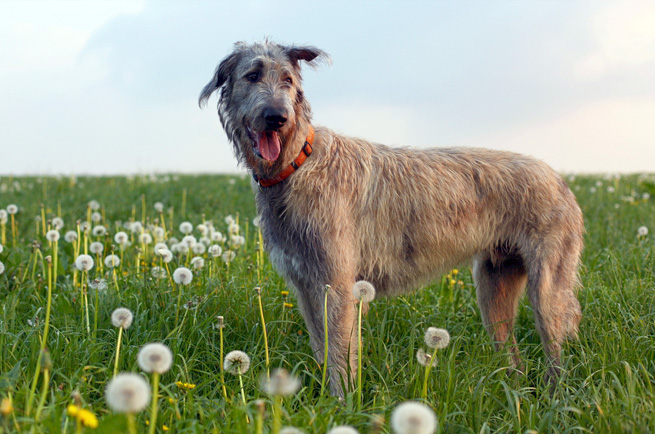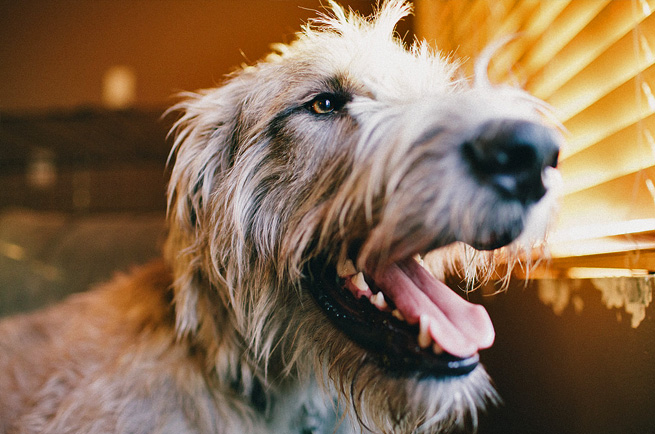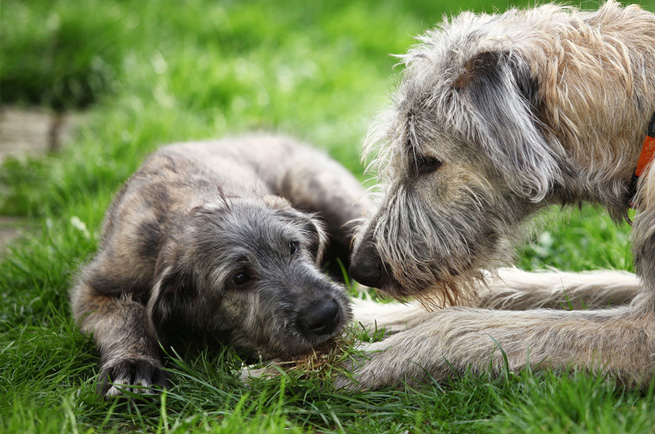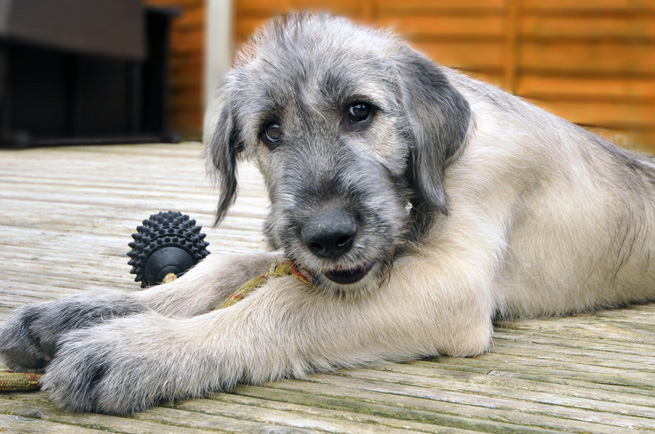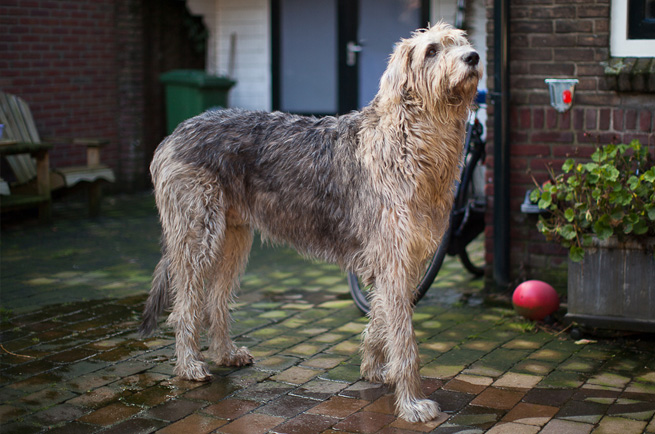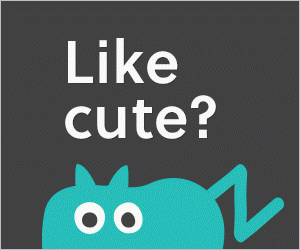Colour
The Irish Wolfhound comes in a variety of colours: grey, grey roan, red, black, roe deer coloured, and plain white.
Height / Weight
The dog stands at 79 - 86cms and the bitch at 71 - 77cms. Their weight depends on the size and build of the dog or bitch but is normally around 68 to 91 kgs.
Health
These dogs are subject to bloat, as any deep chested large dogs are. They are also prone to bone cancer, PRA, Von Willebrands, cardiomyopathy and hip dysplasia.
Intelligence
The Irish Wolfhound is very intelligent breed, that is relatively easy to train. A gentle approach with plenty of understanding will go a long way.
Suitability (Children)
High
Feeding
Their bone growth depends on proper feeding when they are puppies. Over-supplementation and lesser quality food can result in issues with bone development. Irish Wolfhounds can quickly resemble something off Weight Watchers. However, it's not really their fault as their deep chests mean they're prone to bloating. It's best to only feed them dry food once or twice a day.
Excercise
It may surprise you that while these giant dogs need lots of space to run, they don't actually need any more exercise than smaller breeds. A daily walk is perfectly fine to get the jitters out. It's best to avoid long distance walks and exercise this is too taxing for their bodies (which take two years to fully develop).
Ailments
These dogs are subject to bloat, as any deep chested large dogs are. They are also prone to bone cancer, PRA, Von Willebrands, cardiomyopathy and hip dysplasia.
Grooming
Regular brushing and combing once a week using a stiff bristle brush will remove dead hair and leave them feeling clean. Their coat will need to be plucked twice a year to remove excess dead hair, which most professional groomers are able to do.
Bath time should be once every two weeks in the warmer months, and once a month in the colder months.
Grooming Frequency
Once a week
The name Irish Wolfhound originates from their original use as wolf hunters. They are believed to be an ancient breed, possibly dating back to the 1st century BC. Wolfhounds have had many uses throughout the years: guarding herds and property, hunting Irish elk, deer, boar, and even wolves. They were also used during war times. Boar and wolf became extinct in Ireland and as a result the Irish Wolfhound declined in population. They were held in such high esteem that battles were fought over them. Irish Wolfhounds were often given as royal presents.

